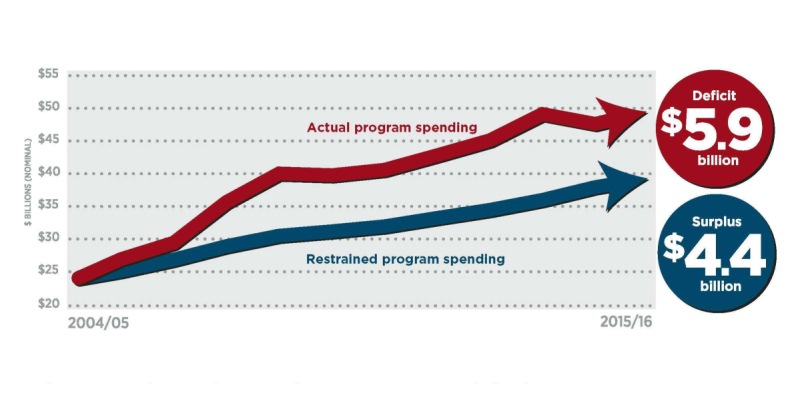Alberta’s budget, to be unveiled on Oct. 27, will contain the province’s seventh deficit in the last eight years, most recently projected at $5.9 billion.
program spending
The Ontario government has never made a secret of its desire to have the federal government help fund Ontario’s provincial budget. It even started its own think-tank with $5 million in 2009, which regularly publishes reports that call on the federal government to rescue Ontario’s provincial finances.
Provincial cries for more federal money are as old as Confederation, and rarely have any substance to them.
In a recent column in the Edmonton Journal, a local historian mused that modern governments have become too enamoured with “the unfettered market of purely economic conservatism.” He then equated higher taxes and more government spending with compassion.
As expected, the 2015 federal budget had the general feel of an election budget, with a small surplus and a smattering of initiatives to satisfy various voting groups.
In a year when two heavyweight provinces, Ontario and Alberta, which together constitute 55 per cent of Canada’s GDP, are running substantial deficits, there are three ways to reduce the red ink.
With tumbling oil prices and resource revenues, Premier Jim Prentice had a choice when he delivered Alberta’s 2015 budget. He could emulate former premier Don Getty and raise taxes or follow the Ralph Klein playbook and reduce spending.
Premier Jim Prentice dropped hints for months that the 2015 provincial budget was a once-in-a-generation chance to “fix” Alberta’s finances.
In a recent column about the upcoming Metro Vancouver transit plebiscite, Vancouver Sun columnist Daphne Bramham complained about business leaders who talked “way more about cutting taxes for poor beleaguered taxpayers for the past 30 years than they have about the valuable services tax money provides.”

